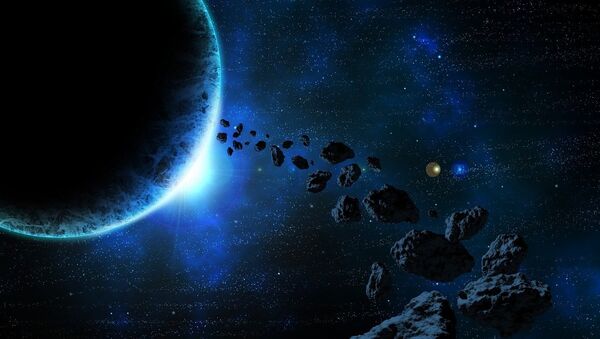Alan Fitzsimmons, professor of mathematics and physics at the Queens University Belfast, has called on amateur astronomers to help space agencies save our planet.
Vast asteroids that might cause vast destruction whiz past the Earth on a regular basis. Space agencies call them near-Earth objects. Asteroids and meteors, whose orbits cross that of our planet and which are above 140 metres across are called potentially hazardous objects. Most of them are detected in advance, however sometimes scientists fail to spot them.
Professor Fitzsimmons said that in time, a huge asteroid will hit our planet and has called on the public to help NASA’s and ESA’s future missions in learning how to shift celestial bodies’ trajectories and prevent collision.
"We will get a serious asteroid impact sometime”, said Professor Fitzsimmons. “It may not be in our lifetime, but mother nature controls when that will happen. We will need to do something about it. We'll need to move that asteroid so it misses us and doesn't hit us”.
DART and Hera
NASA and ESA are planning to launch space missions that will assess humanity’s chances of avoiding a catastrophic rendezvous with a celestial object, similar to the one that occurred 66 million years ago and wiped out most life on Earth. NASA’s Double Asteroid Redirection Test (DART), which is expected to be launched in 2021, will crash into a twin asteroid called 65803 Didymos. Didymos, twin in Greek, is the size of the pyramid at Giza and was categorised as a potential hazardous object, which scientists forecast would come close to our planet in 2123. NASA’s DART would crash into the asteroid’s smaller twin dubbed "Didymoon" and the impact from the collision would perturb its orbit. That is when ESA’s Hera mission will take over.
Hera, which is expected to be launched in 2024, will conduct studies to find out whether the concept of changing an asteroid's trajectory can be used as a defence technique against objects that could pose a danger to our planet.
How can amateur astronomers help?
While flying to Didymos Hera would pass one or more celestial bodies that the mission could study. Scientists have identified several potential targets, but they need more observations – the objects’ orbits and properties, to be able to choose one. Studying these bodies "could give clues to their characteristics in advance of Hera's launch in October 2024", Professor Fitzsimmons said.
"Asteroid research is one area of astronomy where amateur observes continue to make an essential contribution. There are many out there both in Ireland, the UK, Europe and around the world who regularly track asteroids and even measure how their brightness changes with time? That's particularly what we're looking for - these advanced amateurs", Fitzsimmons concluded.

